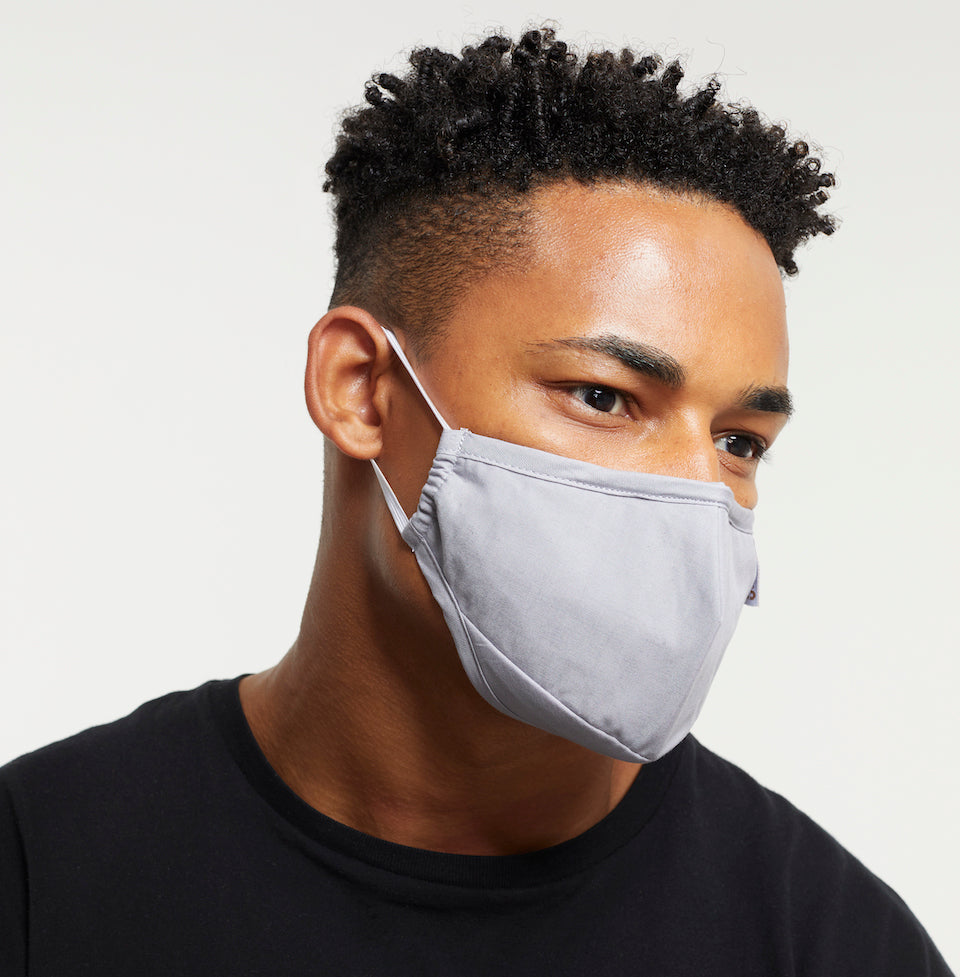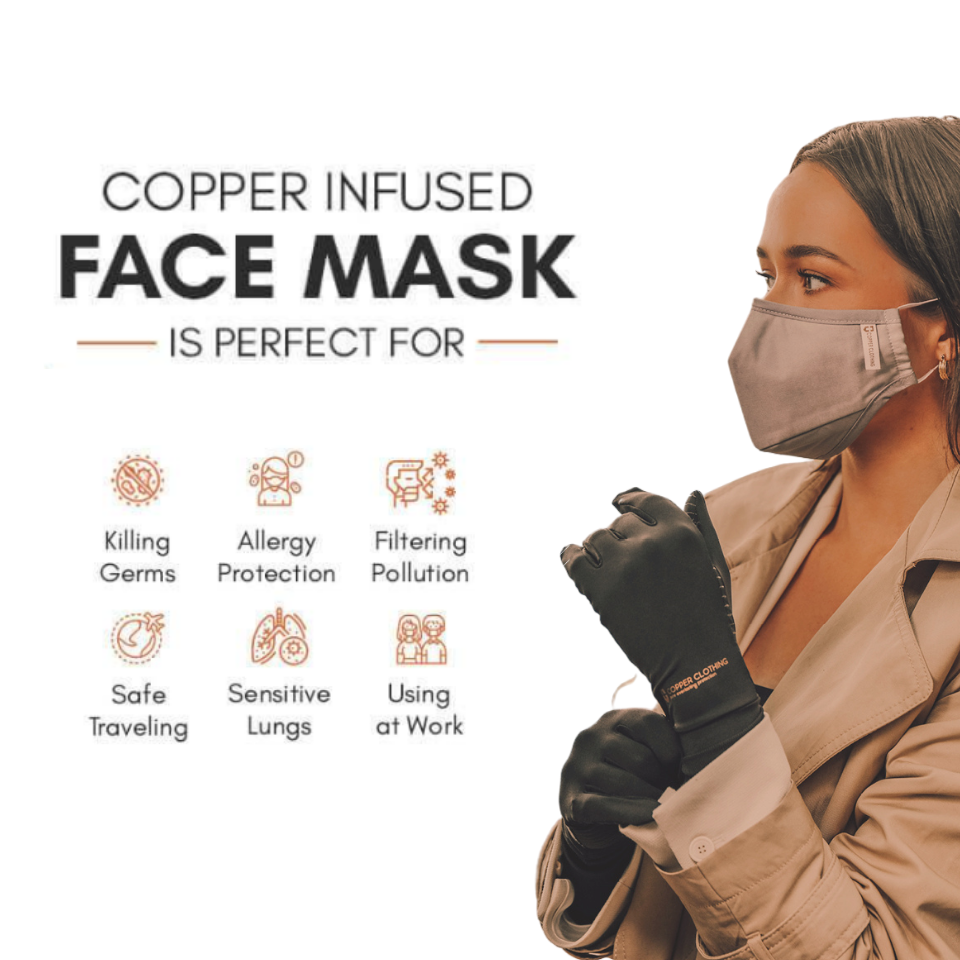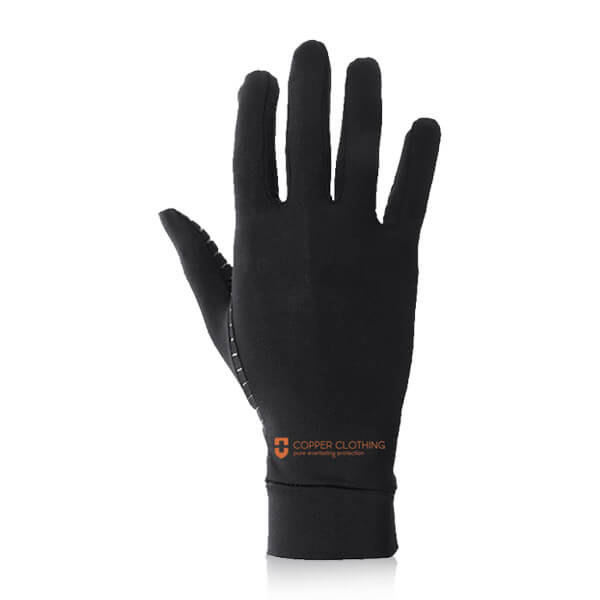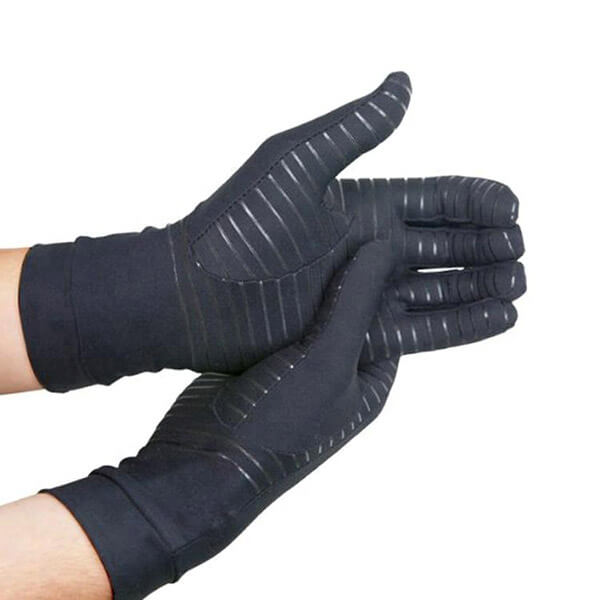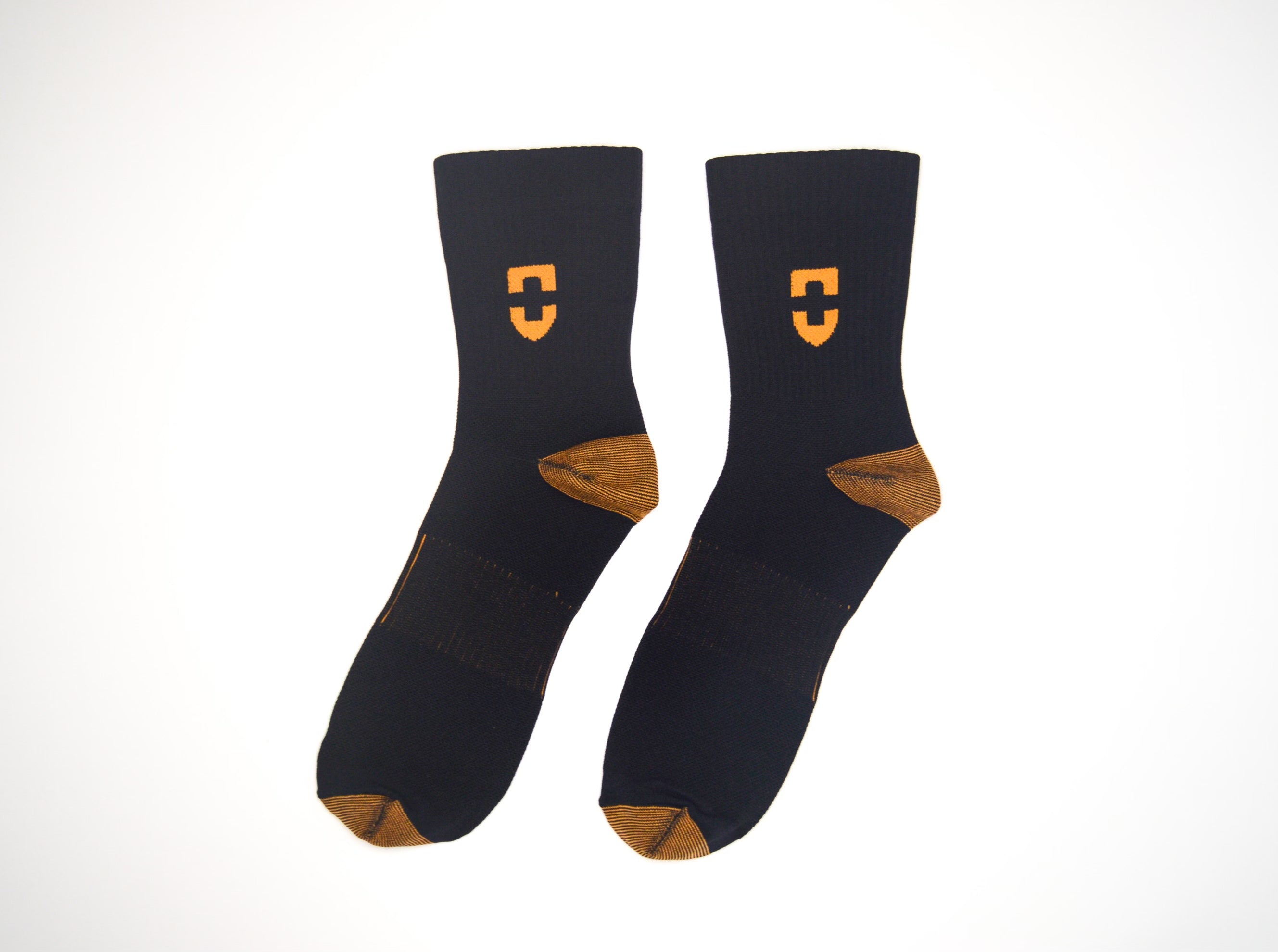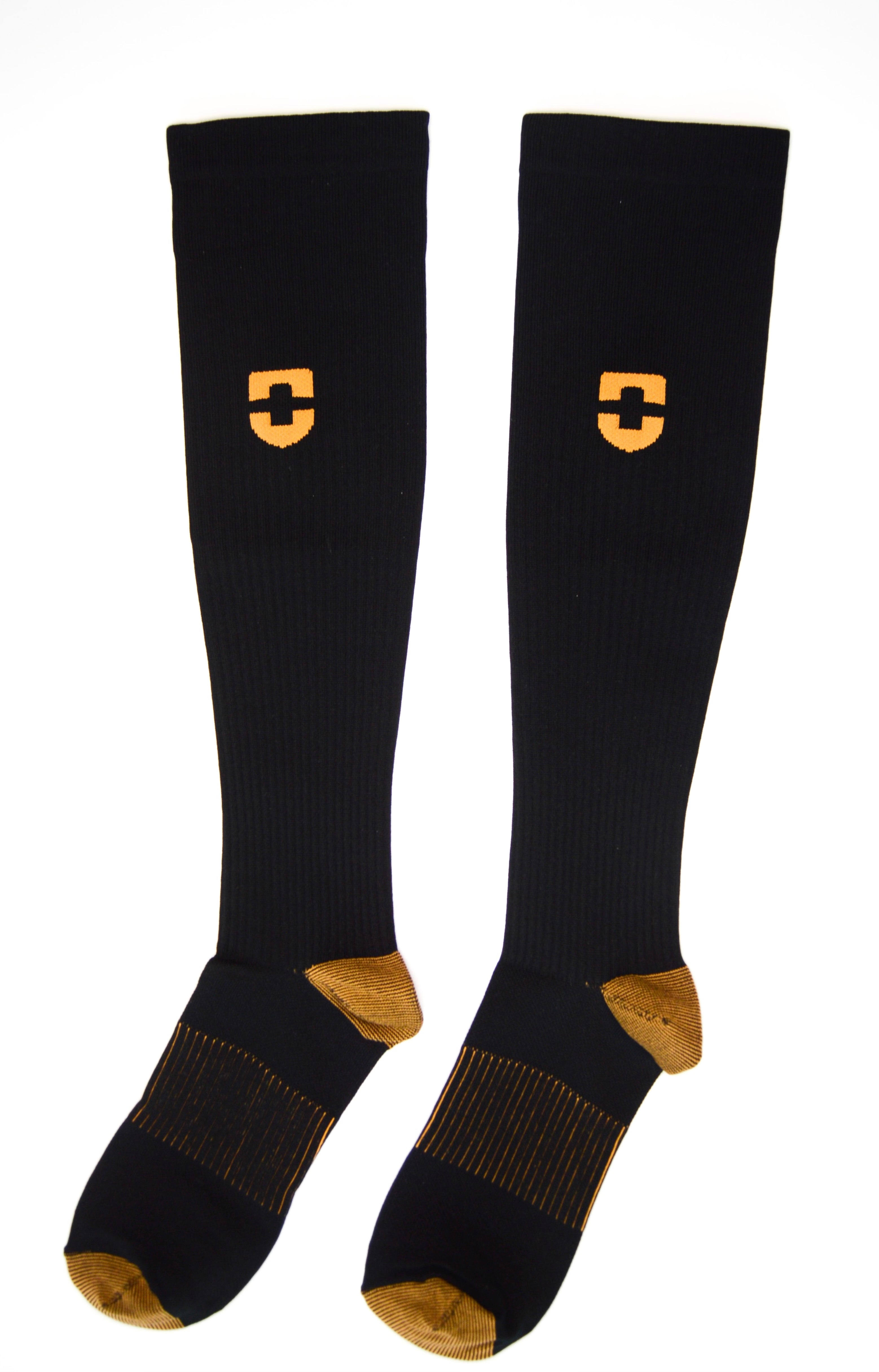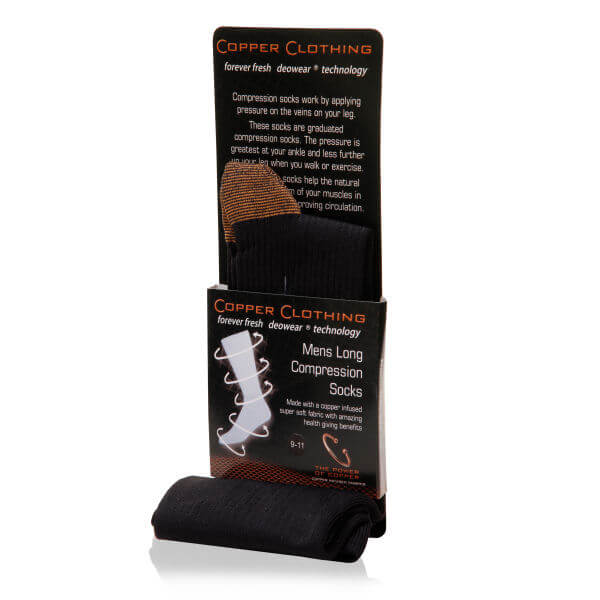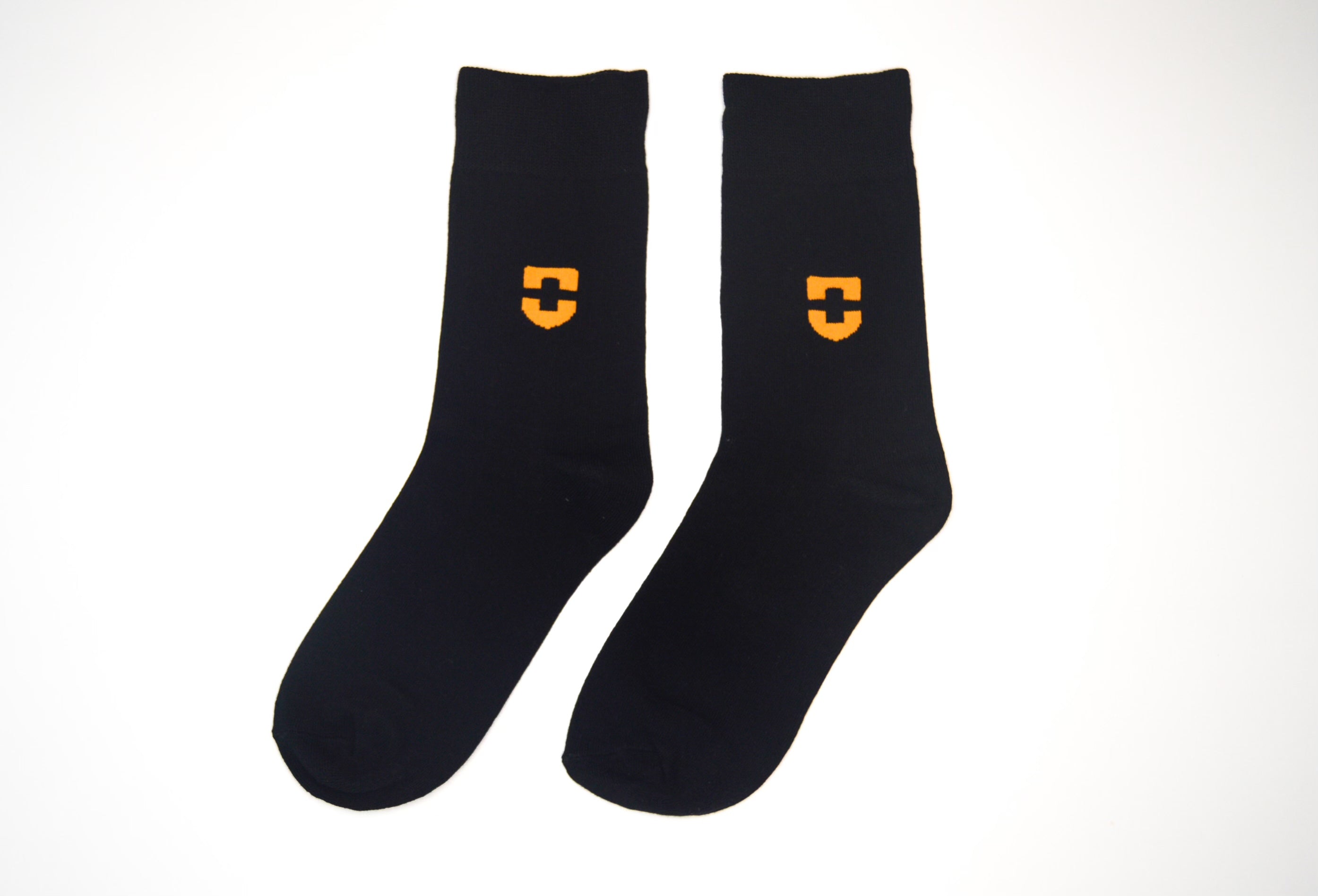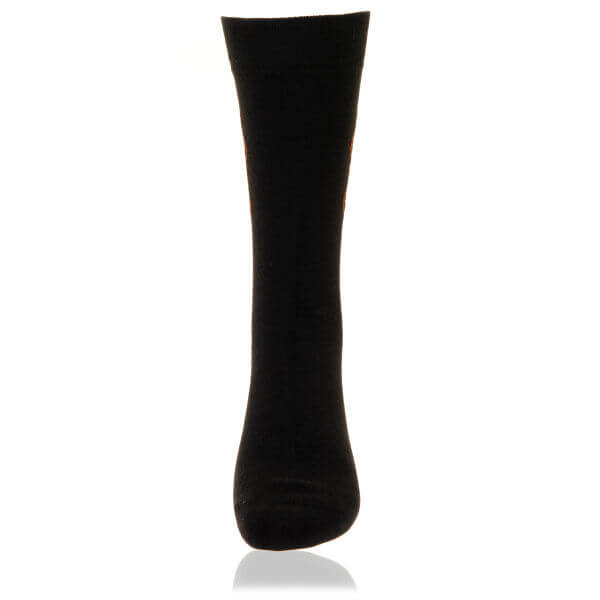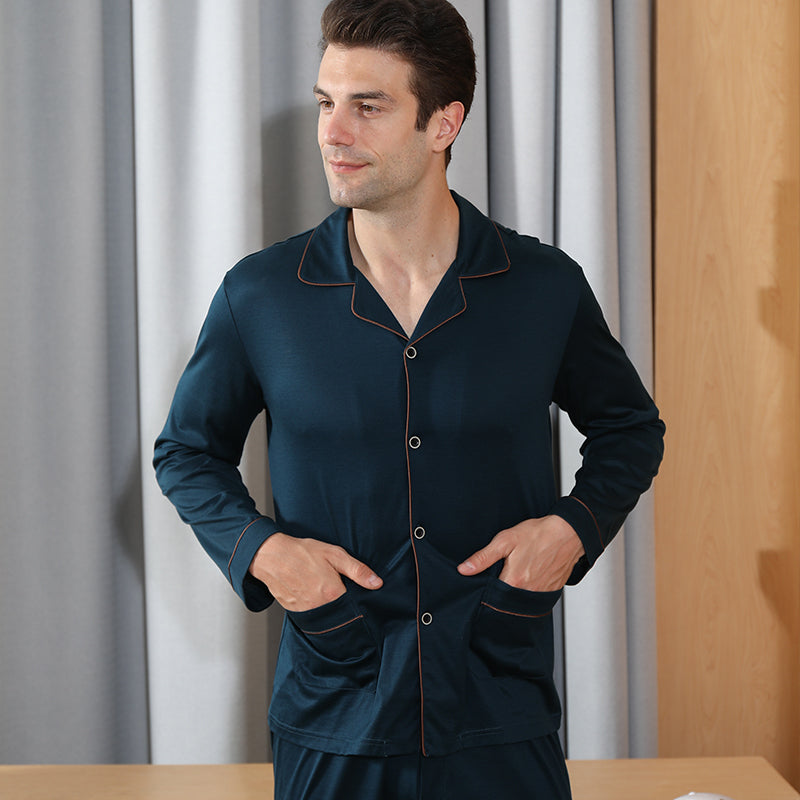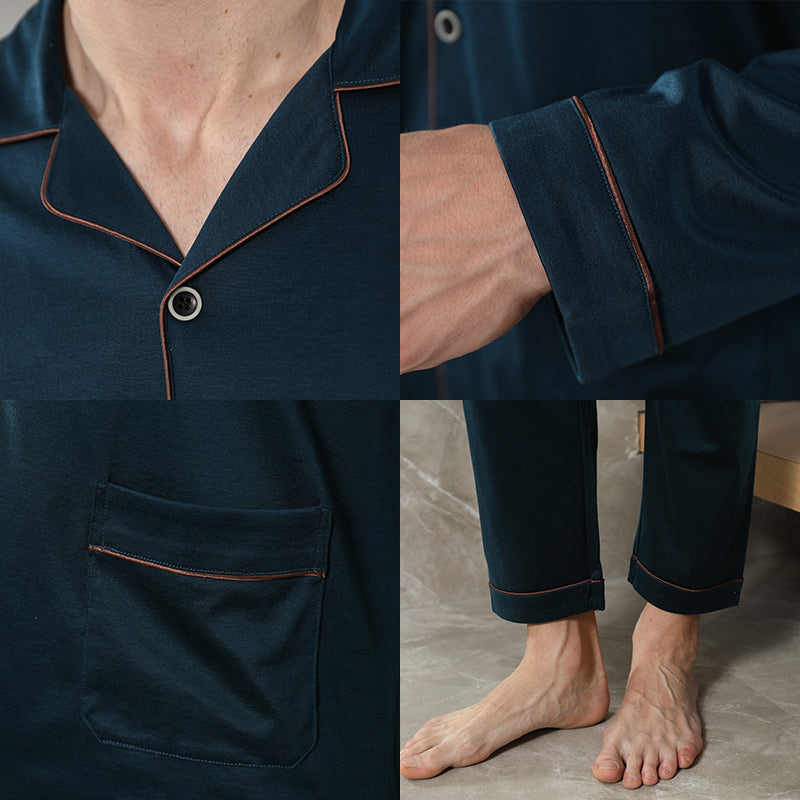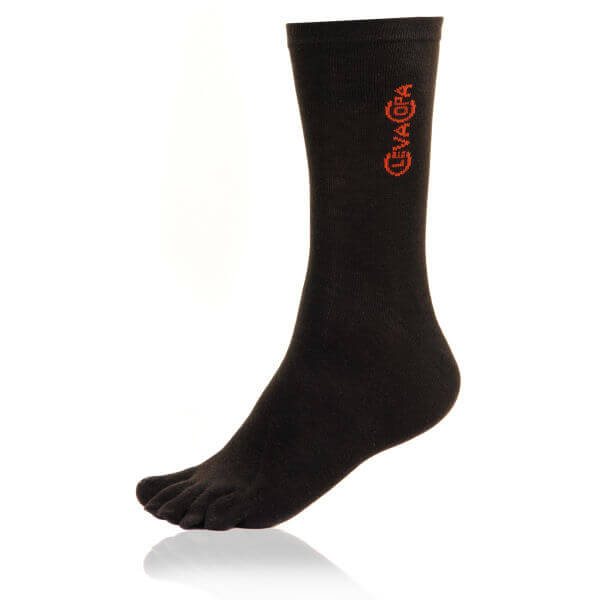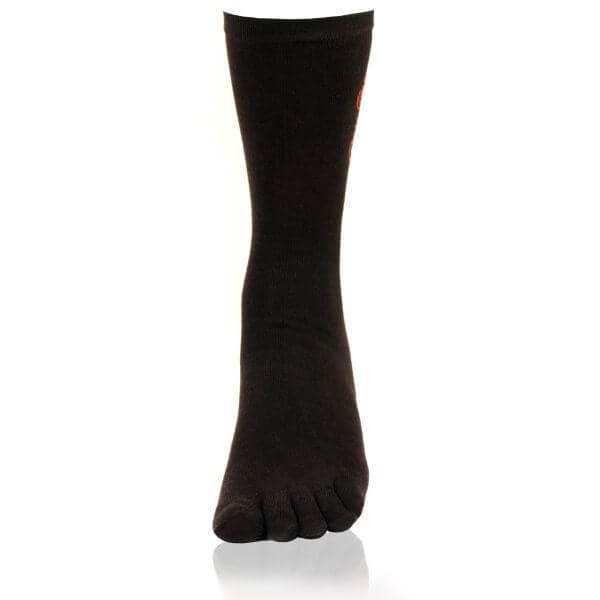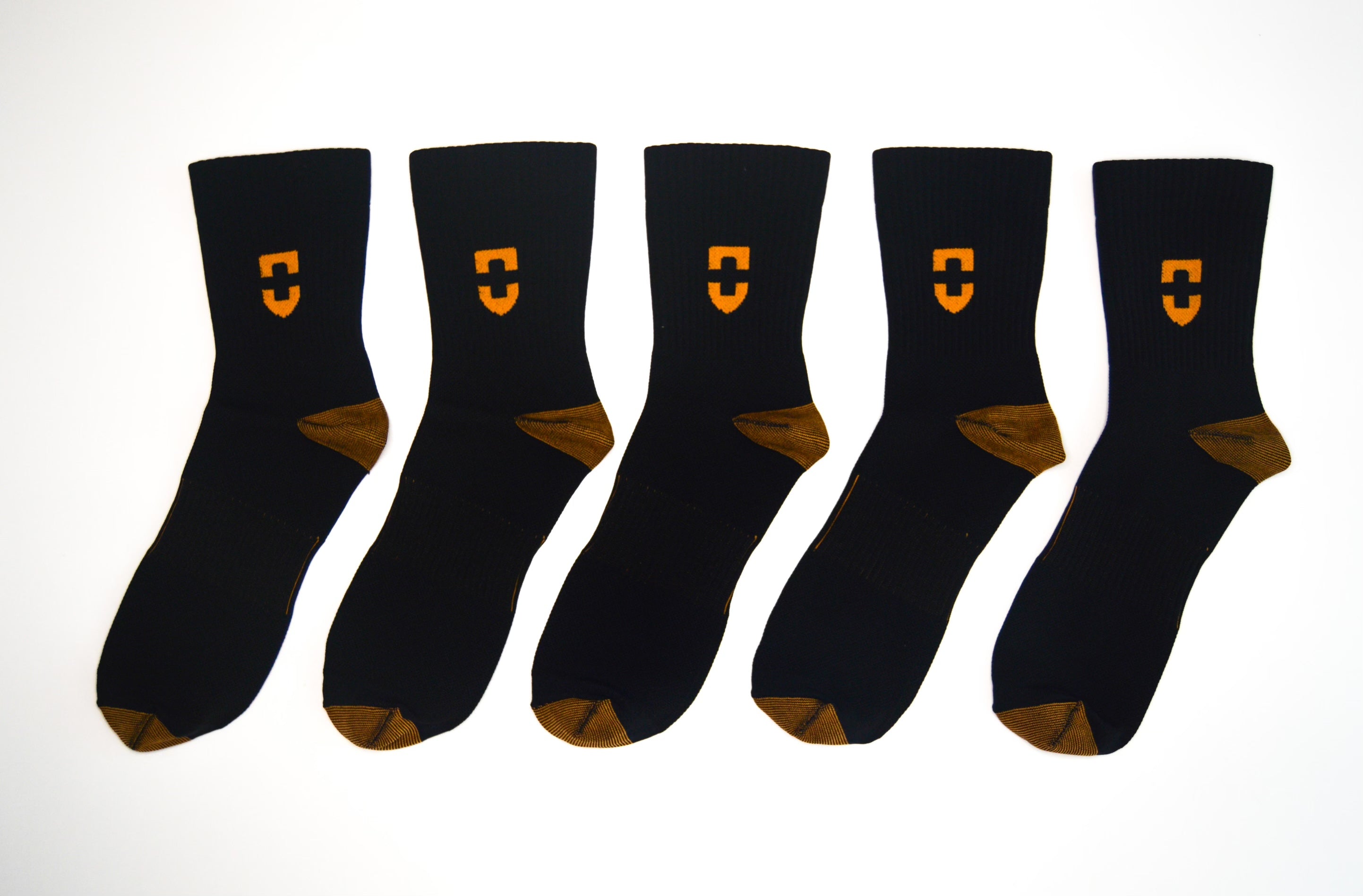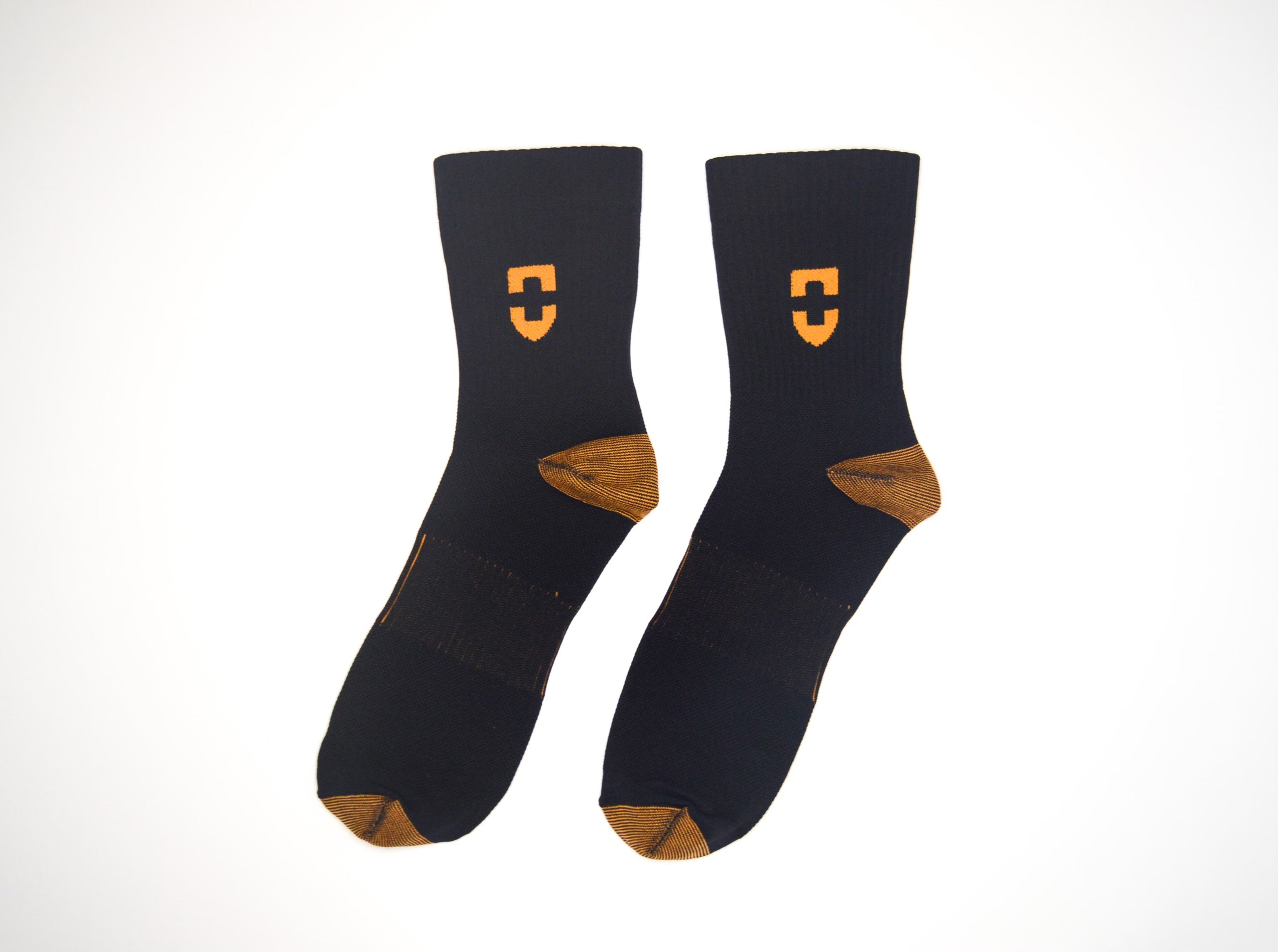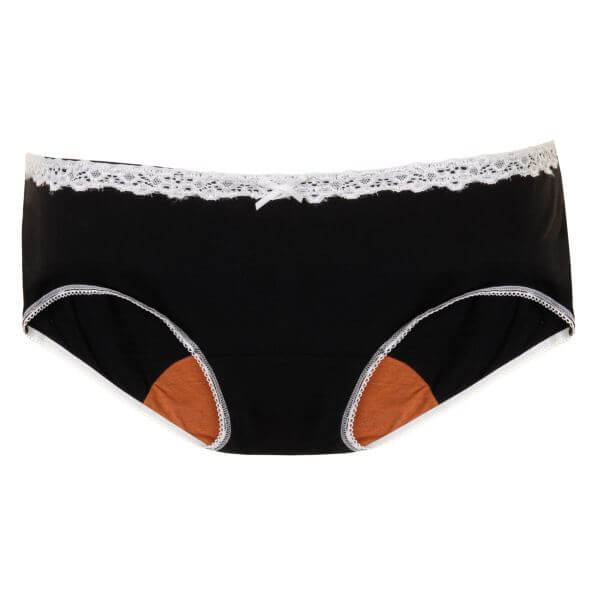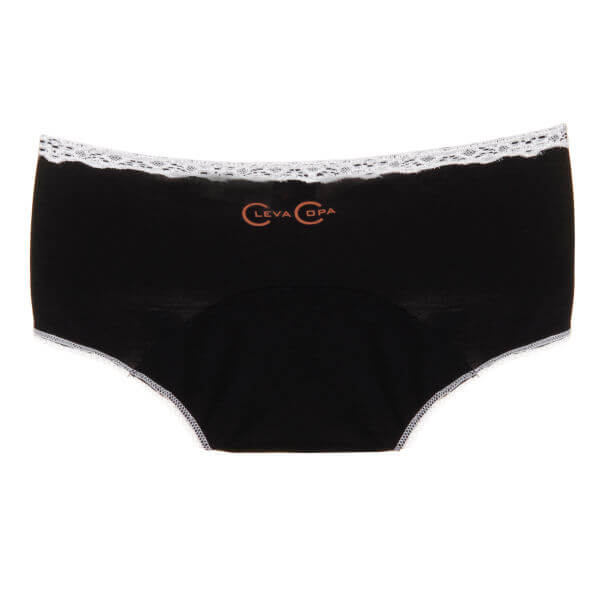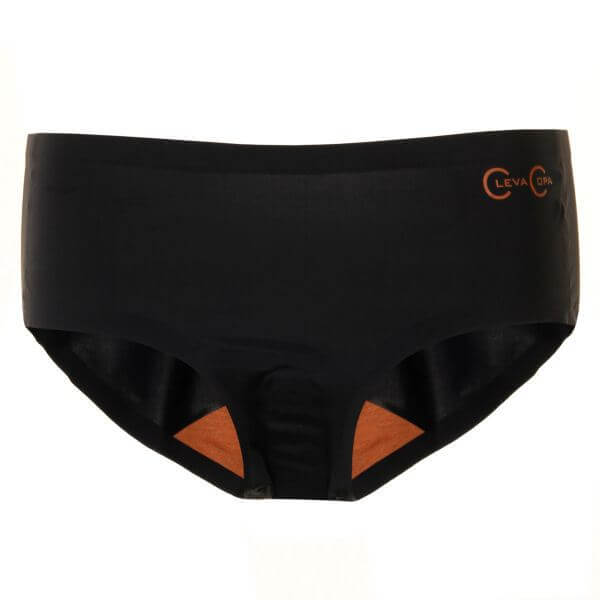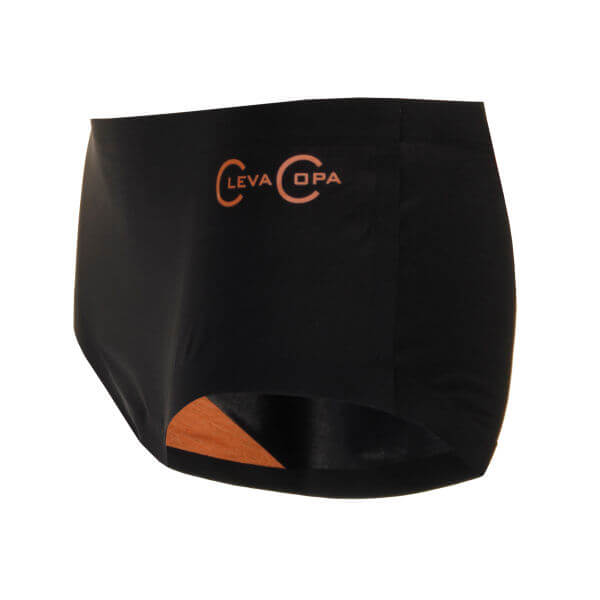Compression Socks for Achilles Tendonitis
Published
August 23 2024
Achilles tendonitis is a common condition that is most commonly associated with athletes or individuals who lead a more active lifestyle, like runners. This common condition causes inflammation and pain in your Achilles tendon, impacting your mobility and, ultimately, the quality of life.
In today’s blog, we will explore what Achilles tendonitis is and even learn how compression socks work great for treating the condition.
What is Achilles Tendonitis?
Achilles tendonitis is an overuse injury marked by inflammation and discomfort in the Achilles tendon, which links the calf muscles to the heel bone. This condition frequently impacts runners and athletes who abruptly ramp up their training intensity or duration. However, it's not exclusive to sports enthusiasts. Achilles tendonitis can affect anyone, especially individuals with tight calf muscles or unusual foot structures.

- Symptoms: People often experience stiffness and pain in the Achilles tendon, particularly when they first get up in the morning or after resting for a while. The affected area might feel tender, swollen, and warm. Over time, if the condition persists, the tendon can become thicker, and small lumps might develop.
- Causes: This condition is often triggered by repetitive strain on the tendon, inadequate stretching, or a sudden uptick in physical activity. Additional contributors can be wearing improper footwear, misalignment in the feet or legs, and the natural decline in tendon elasticity that comes with ageing.
How Do Compression Socks Help with Achilles Tendonitis?
Compression socks are a great solution to your Achilles tendonitis! They can be a good aid in injury recovery and can also provide support to your sprained ankles and calf strains. Athletes with Achilles tendonitis can greatly benefit from compression socks during the recovery period, as these socks may also help them prevent any further injuries. Compression socks promote proper alignment and provide stability while contributing to the improvement of proprioception. This reduces the risk of overexertion and further damage to your Achilles tendon.
Below are some of the main benefits of using compression socks to relieve the pain of Achilles tendonitis:
-
Improved Blood Flow
Compression socks are designed to apply graduated pressure to the lower legs, which means the pressure is highest at the ankles and gradually decreases towards the knees. Improved blood flow ensures that oxygen-rich blood and essential nutrients are efficiently delivered to the Achilles tendon and surrounding tissues. This accelerated delivery supports the body's natural healing processes, promoting faster recovery from inflammation and microtears associated with tendonitis.
-
Reduced Swelling and Inflammation
The gentle pressure exerted by compression socks helps prevent excessive fluid from accumulating around the Achilles tendon. Achilles tendonitis often leads to swelling around the tendon. Compression socks apply consistent pressure to the area, which helps minimise fluid buildup and reduces swelling. By controlling inflammation, these socks can prevent the condition from worsening and contribute to a faster recovery.
-
Pain Relief
The consistent pressure from compression socks can help alleviate pain by reducing the strain on the Achilles tendon. This pressure stabilises the area, lessening the discomfort caused by movement. By minimising swelling and inflammation, compression socks reduce the activation of pain receptors in the affected area. Less activation of these receptors translates to a decrease in perceived pain levels. Over time, the reduction in inflammation and swelling also contributes to less pain.
-
Additional Support
Compression socks offer additional support to the Achilles tendon and surrounding muscles. This extra support reduces the risk of further injury by stabilising the tendon and limiting excessive movement. The snug fit of compression socks helps stabilise the Achilles tendon by limiting excessive or abnormal movements that could exacerbate the injury. This stabilisation allows the tendon to rest and recover while permitting necessary mobility. For those who are active, this support can be crucial in managing symptoms while maintaining a level of physical activity.
What Factors to Consider When Choosing Compression Socks for Achilles Tendonitis?
There are several factors to keep in mind when considering choosing compression socks for treating your Achilles tendonitis. This is necessary because the right level of compression socks can speed up your recovery and provide greater pain relief. Here are the aspects to consider when choosing the right compression socks:

-
Level of Compression
The key aspect to consider is the compression level of the socks. Compression socks are available in various grades, measured in millimetres of mercury (mmHg). For those dealing with Achilles tendonitis, a moderate compression range of 15 to 30 mmHg is generally advised. This level offers adequate support to the Achilles tendon and calf muscles, striking a balance between being firm enough to be effective and not overly restrictive.
-
Length of the Socks
The length of the compression socks is another important factor. It's best to choose socks that cover the calf muscle and reach down to the ankle or foot, as they offer support to the entire area in need. Knee-high compression socks are often recommended because they provide comprehensive coverage and ample support for the Achilles tendon.
-
Fit and Material
Both material and fit are crucial when choosing the right socks. Opt for socks crafted from breathable, moisture-wicking materials that keep your feet comfortable, particularly during long periods of wear or physical activity. The fit should be snug yet comfortable, avoiding any slipping or excessive tightness. Selecting the correct size is key to preventing discomfort and ensuring the socks provide the appropriate level of compression.
-
Personal Preference
Lastly, think about your lifestyle and how active you are. If you're an athlete, you might lean towards compression socks tailored for sports, which often include extra cushioning or designs specifically suited for activities like running. Your personal taste in style and colour could also influence your choice, particularly if you'll be wearing the socks often.
Copper compression socks combine the benefits of compression therapy with the natural properties of copper. These socks help improve circulation, reduce swelling, and provide support during activities. The copper-infused fabric is also believed to have antimicrobial properties, keeping your feet fresh and odour-free.
Scroll through our range of copper compression socks!
Buy NowWhat Can You Do to Speed the Recovery from Achilles Tendonitis?
Getting compression socks and wearing them on a regular basis is just one step towards achieving some relief from Achilles tendon pain. You can speed up your recovery process from Achilles tendonitis by following the below additional care steps:
-
Take Rest
Minimising any strain on the leg affected by Achilles tendonitis is crucial. In more serious situations, immobilisation with a walking boot, specialised supportive equipment, or an ankle brace might be necessary. However, in milder cases, rest is often sufficient—this means refraining from running, exercising, and limiting walking as much as possible.
-
Ice Therapy
Applying ice to the affected area can help reduce pain and swelling associated with Achilles tendonitis, depending on the severity of the injury.
-
Strengthening and Stretching Exercises
Strengthening your calf muscles is another crucial aspect of recovery and can help minimise the likelihood of future tendonitis. Start with basic calf raises without additional weight or support, then progressively challenge yourself by using a dumbbell or performing the exercise on one leg, enhancing your balance.
Incorporating cross-training into your routine is also highly advantageous. Instead of focusing solely on running, consider adding a couple of cycling sessions per week or engaging in swimming and other low-impact activities. This approach helps maintain your fitness levels while reducing the risk of re-injuring your Achilles tendon.
When to See a Doctor?
It’s wise to seek a doctor’s advice if you frequently feel discomfort or pain in your Achilles tendon. Addressing persistent Achilles tendon pain is crucial. For ongoing issues, a doctor might suggest physical therapy or refer you to a specialist in sports injuries to aid in your recovery.
In cases of severe pain, you might be dealing with a ruptured Achilles tendon. Immediate medical attention is necessary in such situations.
FAQs
-
Are there any side effects of wearing compression socks for Achilles tendonitis?
Using compression socks to manage Achilles tendonitis usually doesn't result in serious side effects. However, research indicates that the most frequent problem is skin irritation. This can happen because of the pressure and friction from the compression fabric rubbing against the skin. Such irritation might cause mild redness and itching, but these symptoms are generally harmless.
-
How long should I wear compression socks to recover from Achilles tendonitis?
Recovering from Achilles tendonitis while wearing compression socks usually takes between 6 to 12 weeks, depending on individual circumstances. The initial 6 to 8 weeks are particularly important for effective recovery, during which it is essential to rest and limit movement in the foot and ankle. Throughout this period, wearing compression socks is advised to aid the healing process. They help enhance blood circulation, alleviate swelling, and minimize discomfort.
-
Can compression socks replace other treatments for Achilles tendonitis?
No, compression socks should be integrated into a comprehensive treatment strategy for Achilles tendonitis. This plan typically includes adequate rest, physiotherapy, and, in some cases, medication.









